
Test drive Hyundai Creta against Renault Kaptur
All-wheel drive is not at all a mandatory option for budget crossovers. Especially now, when more than a million are asked for such SUVs. Simple mono-drive versions are enough in most cases.
The shaft of snowdrifts in the corner of the crowded parking lot disappeared in one week in March, and now there is nowhere to put the car again - the vacant space was quickly taken up by numerous cars. It's a pity, because before the arrival of warming, this corner remained inaccessible for most cars, and it was there that you could park the Hyundai Creta and Renault Kaptur - crossovers, the duel of which in 2016 was supposed to be the brightest market battle of the year. In our case, they did not even need four-wheel drive - quite market options with front-wheel drive, manual transmissions and a price of about $ 13 came to the test.
In urban off-road conditions, the decisive factor is most often not the drive, but the ground clearance and body configuration. Therefore, mono-drive crossovers here have the right to life, and those equipped with a good plastic body kit are not at all afraid to play the role of a tractor, even in packed snow. The Hyundai Creta calmly climbs into the snowdrifts along the thresholds and diligently punches a track while the front wheels have at least some grip. The Kaptur goes a little further, since it has even more ground clearance (204 versus 190 mm), and the high seating position creates the feeling that the car is really rather big. Meanwhile, Hyundai is still winning the market battle, suddenly bursting into the pool of market leaders and firmly entrenched there.
However, the Russian representative office of Renault is not offended - the handsome Kaptur is also successful and Duster does an excellent job with the task of attracting new customers without losing customers. In total, the sales volumes of Duster and Kaptur are about 20% more than that of the Hyundai crossover, that is, the idea to make another more stylish and youthful car on the existing chassis turned out to be successful.
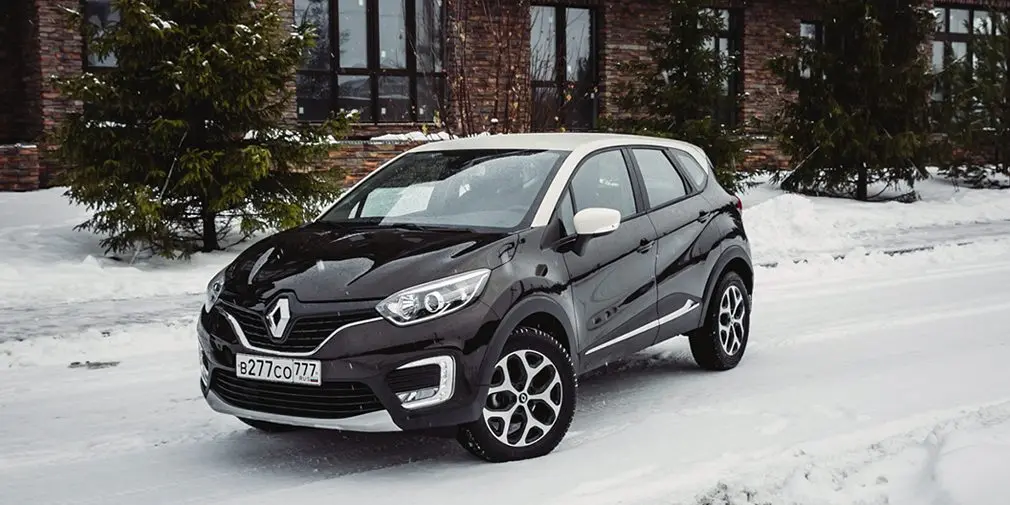
From an emotional point of view, Kaptur cannot be overshadowed by the Korean crossover, and its audience is probably older. Creta did not turn out bright, but the appearance turned out to be corporate and calm - the kind that conservative buyers who prefer proven solutions should like. The front end cut with trapezoids looks quite fresh, the optics are modern, and the plastic body kit seems quite appropriate. There is no aggression in appearance, but the crossover looks tightly knocked down and does not seem sissy.
The interior of the Creta is very decent and almost does not resemble the first generation Solaris. There is no sense of budget and total savings here, and the ergonomics, at least for a car with steering wheel adjustment for reach, is quite easy. However, in the case of "mechanics", a comfortable steering wheel can be obtained only in the richest version of Comfort Plus, and cheaper cars are supposed to have the only adjustment only by the angle of inclination. The same story is with the power steering: in the base cars it is hydraulic, in crossovers with “automatic” or in the top version - electric.
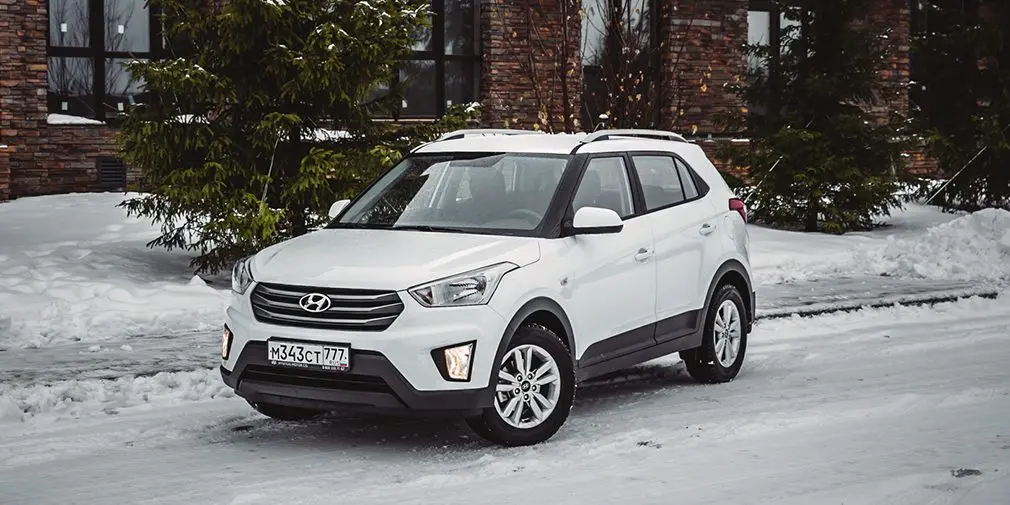
The really inexpensive solutions in the Creta showroom are well disguised. The window lifter keys, for example, do not have backlighting, and soft inserts in places of frequent touches, metallized door handles and beautiful instruments are, again, only top versions. The glove box also has no illumination. It is good that normal seats with a considerable range of adjustments and tangible lateral support do not depend on the configuration. As well as outside the class, there is a large reserve of space in the back - you can sit behind a driver of average height without bending your head and without restricting the position of your legs.
The window line upturned to the stern creates only a visual feeling of tightness in the cabin, but this is the case when the inside of the car is really larger than the outside. Finally, the Creta has an unpretentious but decent trunk with neat upholstery and floor level flush with the bottom edge of the compartment.
Loading the Kaptur is somewhat more difficult - things will have to be carried into the compartment through the door sill. In the trunk, it seems, there is an opportunity to put the raised floor a little higher, but for this you will have to buy another partition. In terms of numbers, there are less conventional VDA-liters, but it feels like there is more space in Renault, since the compartment is longer, and the walls are even.
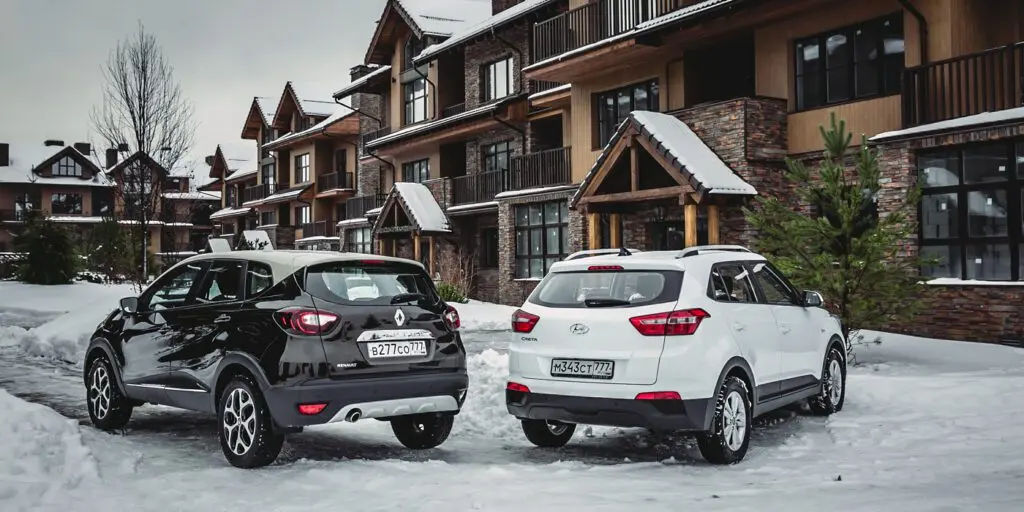
But Renault, with its double door seals, leaves the sills clean, which is much more important than a dirty spare wheel. Climbing into the cabin through a high threshold, you find that inside it is almost a passenger car with a completely familiar seating position and a low roof. The interior is full of bold lines, the instruments with the digital speedometer are beautiful and original, and the key card and engine start button are laid down for even the simplest versions.
But in general, it's a bit boring here - after Creta, it seems that engineers have forgotten a dozen buttons. Materials from simple, although they do not look like that. It's comfortable behind the wheel, but the steering wheel, alas, in all versions is adjustable only in height. And in the back, by modern standards, it is not so free - it is generally comfortable to sit, but there is not too much space, plus the roof hangs over your head.
Competitors offer not the most technologically advanced powertrains, but the Creta set looks a little more modern. Both engines are slightly more powerful than those of the Kaptur, and the Korean boxes - both “mechanics” and “automatic” - are only six-speed. At Renault, the younger engine is aggregated either with a five-speed manual gearbox or with a variator, and the older one - with a four-speed automatic transmission or a six-speed manual transmission. At the same time, the most budgetary version of Renault with a 1,6-liter engine and a "five-step" rides better than it could - acceleration seems to be very calm, but it is quite easy to manage the traction.
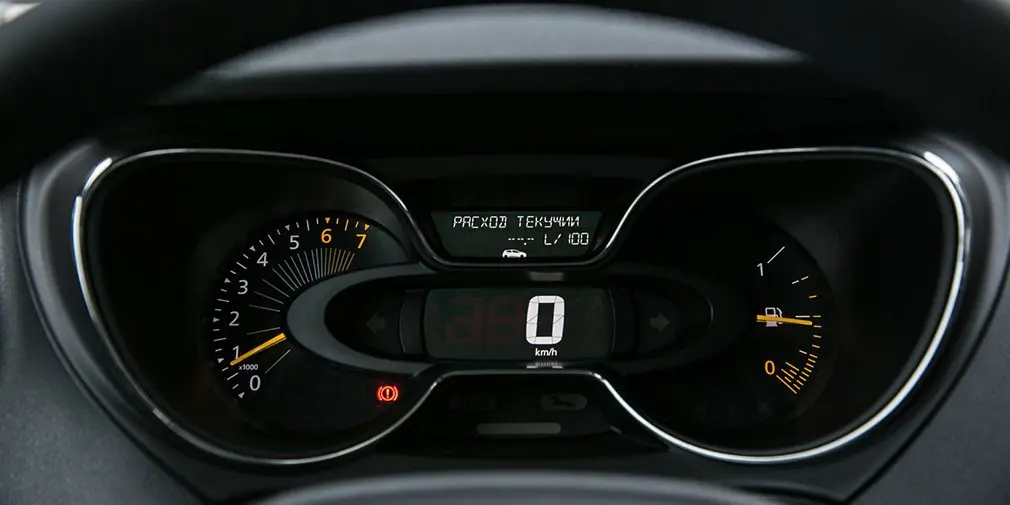
The Kaptur makes it easy to start from a standstill, and the clutch pedal can be thrown not too carefully. Creta, on the other hand, requires a more careful attitude, and without habit, the Korean crossover can inadvertently be drowned out. On the other hand, the lever of the manual transmission works much more clearly, and shifting gears in the stream is a pleasure. The Renault selector seems to be wadded, and although there are no problems with getting into positions, you do not want to actively switch on this car. And the 123-horsepower Creta engine in urban conditions is lucky, though without a spark, but still more fun than its competitor. At highway speeds, this is more pronounced, especially if the driver is not too lazy to use lower gears more often.
In terms of chassis settings, the Creta is very similar to Solaris with some correction for density - the suspension of a taller and heavier crossover still had to be slightly squeezed so that the car did not sway on bumps. In the end, it turned out well: on the one hand, Creta is not afraid of bumps and irregularities, allowing it to walk on broken dirt roads, on the other hand, it stands very firmly in fast turns without large rolls. The steering wheel, which is light to nothing in parking modes, is sharply filled with good effort on the move and does not move away from the car. However, this is a characteristic of cars with an electric booster.
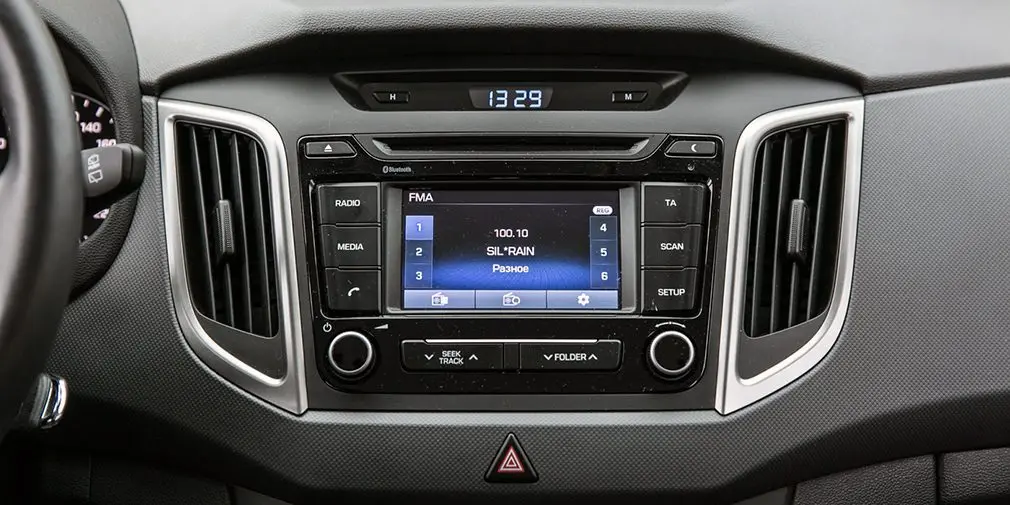
Kaptur only offers an electro-hydraulic system, and the steering wheel of the French crossover feels heavy and artificial. In addition, the "steering wheel" often transfers the road ripples to the hands, but it is quite possible to put up with it, since serious blows to the steering wheel do not come. The main thing is that the chassis works conscientiously, and high ground clearance with long suspension travel does not mean laxity at all. Kaptur is not afraid of broken roads, the responses of the car are quite understandable, and at speed it stands confidently and rebuilds without unnecessary equivocations. Rolls are moderate, and only in extreme corners the car loses focus.
With a ground clearance of more than 200 mm, the Kaptur allows you to safely climb high curbs and even crawl through deep mud, into which the owners of larger crossovers do not risk meddling. Another thing is that for viscous mud and steep slopes 114 hp. the base motor is already frankly small, and besides, the stabilization system mercilessly strangles the engine when slipping, and you cannot turn it off on the version with a 1,6 liter engine. Off-road capabilities of the Creta are limited by lower ground clearance, but, for example, getting out of the snow captivity on a Hyundai is sometimes easier, since the electronic assistant can be deactivated.
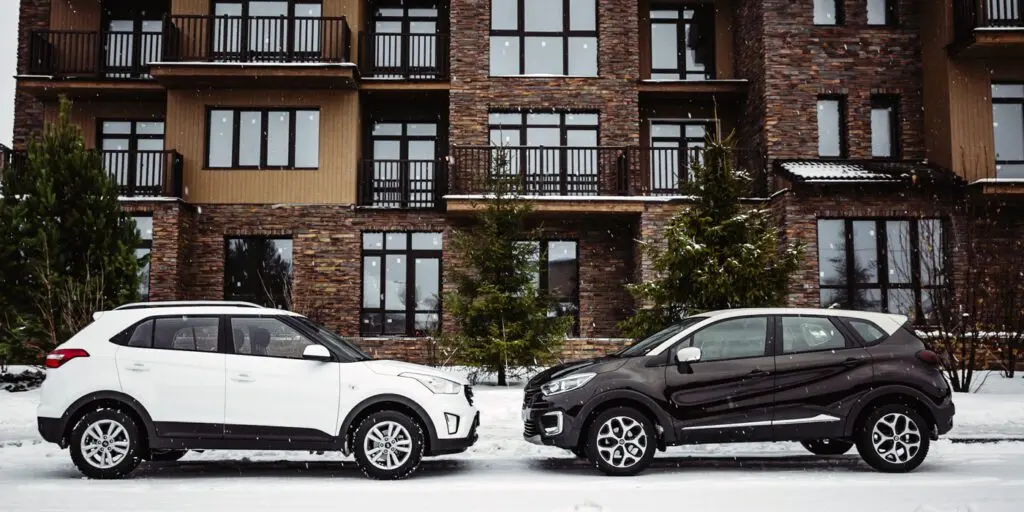
But even without taking into account all these nuances, the market considers both cars to be normal crossovers - more versatile and prestigious than the utilitarian and boring Renault Logan and Hyundai Solaris. It is clear that for the conditional $ 10. Creta is not for sale without air conditioning, electric mirrors and even a luggage rack, and the cost of the optimal version in the Active version and with a set of additional packages is close to a million.
An initial $ 11 Kaptur. is noticeably better equipped, but the dealer can easily catch up with the price tag up to the same million, offering a well-packed car. The all-wheel drive Creta also seems to be cheaper than the Kaptur 605 × 4, but again, we are talking about a simple configuration with a 4-liter engine. Renault with four-wheel drive will be at least two-liter.
It is important that neither Creta nor Kaptur are perceived as compromise products born in the throes of total economy, although we would have the right to expect something similar from the manufacturers Logan and Solaris. Against the background of the Creta segment, there is not enough visual brightness, but the overall quality of the model seems attractive.
The Kaptur has a stylish exterior and makes a strong claim to flotation, leaving behind a screen simple chassis and aggregates. However, both cope well with urban off-road, not forcing them to carry an expensive all-wheel drive with them all the time. Therefore, the choice will be made, most likely, in the process of careful comparison of the lines of the price lists. And it will be the last to depend on the depth of the snowdrift in the parking lot.
We express our gratitude to the companies "NDV-Real Estate" and the residential complex "Fairy Tale" for their help in filming.
| Body type | Universal | Universal | |
| Dimensions (length / width / height), mm | 4333/1813/1613 | 4270/1780/1630 | |
| Wheelbase, mm | 2673 | 2590 | |
| Curb weight, kg | 1262 | 1345 | |
| engine's type | Gasoline, R4 | Gasoline, R4 | |
| Working volume, cubic meters cm | 1598 | 1591 | |
| Power, hp with. at rpm | 114 at 5500 | 123 at 6300 | |
| Max. torque, Nm at rpm | 156 at 4000 | 151 at 4850 | |
| Transmission, drive | 5th st. INC | 6th st. INC | |
| Maximum speed km / h | 171 | 169 | |
| Acceleration to 100 km / h, from | 12,5 | 12,3 | |
| Fuel consumption (city / highway / mixed), l | 9,3/3,6/7,4 | 9,0/5,8/7,0 | |
| Cargo space, l | 387-1200 | 402-1396 | |
| Price from, $ | 11 593 | 10 418 |